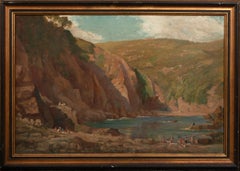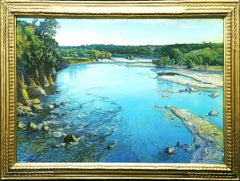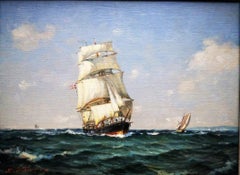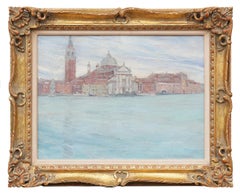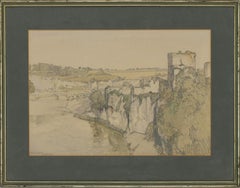Samuel John Lamorna Birch Art
Samuel John Lamorna Birch was the leading figure of the second flowering of the Newlyn School. He was so smitten with the Lamorna Valley and Cove that he took its name as his own, being known as Lamorna Birch. Samuel John Birch was born in Egremont, Cheshire, England. Apart from a brief period of study, at the Académie Colarossi, Paris in 1895, he was largely self-taught as an artist. Birch first visited West Cornwall in the late 1880s and settled in the Lamorna Valley in 1892. He adopted the epithet ‘Lamorna’ in 1895 to distinguish himself from fellow artist Lionel Birch (an idea suggested by Stanhope Forbes). He is regarded as the father figure of the later group of “Newlyn” artists, which included Laura and Harold Knight, Alfred Munnings, Frank Gascoigne Heath and Stanley Gardiner, known as “the Lamorna Group”. Birch was elected as an Associate of the Royal Academy (ARA) in 1924 and was made a full Royal Academician (RA) eight years later. In his long and distinguished career, he exhibited over 200 works at the Royal Academy, as well as exhibiting throughout the country and abroad.
Early 20th Century Samuel John Lamorna Birch Art
Canvas, Oil
Late 19th Century Impressionist Samuel John Lamorna Birch Art
Oil
20th Century Impressionist Samuel John Lamorna Birch Art
Canvas, Oil
20th Century Impressionist Samuel John Lamorna Birch Art
Canvas, Oil
20th Century Post-Impressionist Samuel John Lamorna Birch Art
Canvas, Oil
Mid-20th Century Abstract Impressionist Samuel John Lamorna Birch Art
Canvas, Oil
1910s American Impressionist Samuel John Lamorna Birch Art
Canvas, Oil
Early 20th Century Impressionist Samuel John Lamorna Birch Art
Canvas, Oil
Early 1900s Impressionist Samuel John Lamorna Birch Art
Oil
1940s American Impressionist Samuel John Lamorna Birch Art
Oil, Panel
Early 1900s American Impressionist Samuel John Lamorna Birch Art
Canvas, Oil
20th Century American Impressionist Samuel John Lamorna Birch Art
Canvas, Oil
20th Century American Impressionist Samuel John Lamorna Birch Art
Oil, Canvas
1910s American Impressionist Samuel John Lamorna Birch Art
Canvas, Oil
20th Century Impressionist Samuel John Lamorna Birch Art
Oil, Canvas
20th Century American Impressionist Samuel John Lamorna Birch Art
Oil, Canvas
1930s Samuel John Lamorna Birch Art
Paper
20th Century Samuel John Lamorna Birch Art
Watercolor
Early 19th Century Realist Samuel John Lamorna Birch Art
Watercolor
